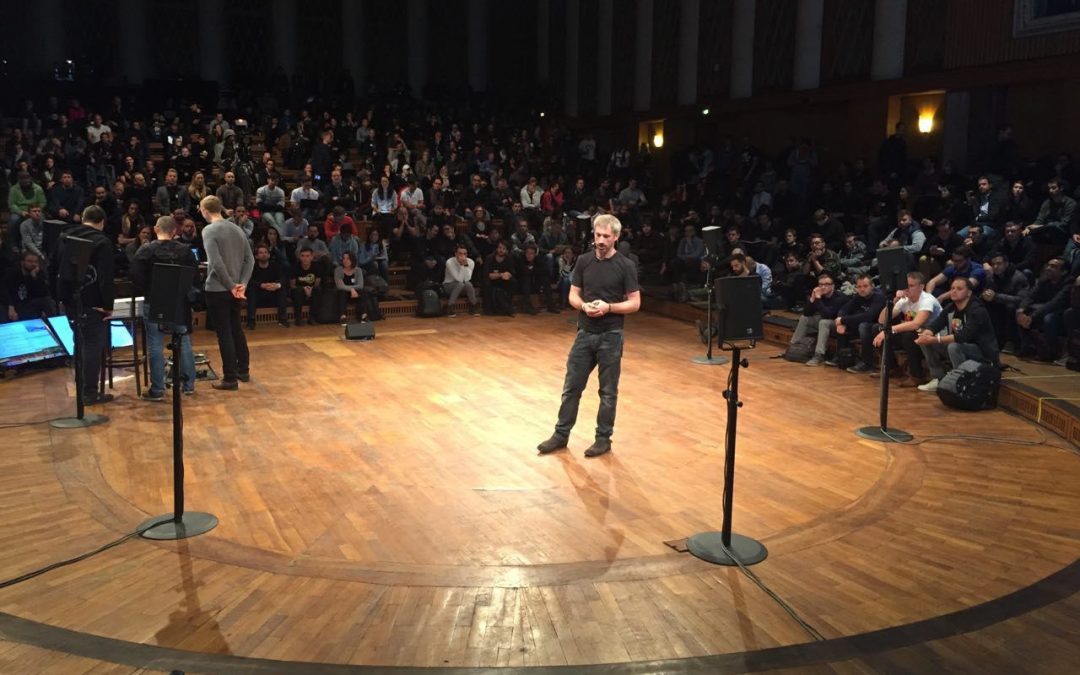The much-anticipated parachain auction process, where projects are allocated slots for building on the Polkadot cryptocurrency network, kicks off next month.
The first of the auctions is slated to begin on Nov. 11, according to the Polkadot Council. A proposal was submitted to the governance forum minutes ago.
Stepping back, the parachain auction process is an important milestone in realizing Ethereum co-founder Gavin Wood’s vision for an interconnected blockchain framework. (Parachains have already been running successfully on Polkadot’s already-live “canary” network, Kusama, with 11 parachain slot auctions taking place since the launch of Statemine on June 3.)
“Almost exactly five years after the vision of a heterogeneous multichain framework was first outlined in the Polkadot [white paper], parachains are now officially ready for launch on Polkadot,” Polkadot founder Robert Habermeier said in a blog post shared with CoinDesk.
The last technical steps to complete before launching parachains on Polkadot were the finalization of parachain disputes and Polkadot’s full code audit, both of which have now been completed, according to Habermeier.
DOT race
The ongoing Kusama parachain auctions have seen some 2.4 million KSM, Kasama’s native token, contributed to crowdloans by more than 49,000 unique addresses. DOT, the native asset of the Polkadot network, will be used in the upcoming auctions.
A gaggle of decentralized projects have won parachain slots so far, including decentralized identity protocol Kilt and decentralized finance (DeFi) building blocks such as Acala’s Karura Network, Moonbeam’s Moonriver Network, Astar’s Shiden Network and Phala’s Khala Network.
In terms of which projects are at the front of the queue for a Polkadot slot, Habermeier told CoinDesk via Telegram:
“While I obviously can’t vouch for any particular parachain or try to predict winners, Polkadot’s parachain auction model certainly benefits projects that are able to gather substantial community support through its crowdloan mechanism. We saw this on Kusama and I suspect we will see similar excitement for the early parachains on Polkadot.”
The DOT required to obtain a slot is purely based on an efficient market mechanism, said Habermeier. “That said,” he added, “the economics of Polkadot are designed so that a target of 20% of DOT end up bonded on behalf of parachains over time.”
‘Boring’ parachain launch expected
As with Kusama, each seven-day auction on Polkadot will consist of a starting period of one day and 21 hours, followed by an ending period of five days. Bidding ends on the seventh day, when the precise moment of the auction’s close is determined retroactively by an on-chain, verifiable random function (VRF).
The auction can end at any point during the ending period, which prevents last-minute “auction sniping” for better price discovery.
The first five projects to win an auction would be onboarded to Polkadot simultaneously on Dec. 15, 2021, rather than being onboarded immediately following each auction (as has occurred on Kusama). Each auction on Polkadot will assign a parachain slot for a total of 96 weeks (divided into eight 12-week lease periods) as opposed to Kusama’s 48 weeks.
According to this proposal, which is now going through a public referendum, the first batch of five auctions will take place with one new auction each week.
A second batch of six auctions will follow with one new auction every two weeks. The second batch of six auctions would be onboarded for lease period seven, which begins March 9, 2022.
The rolling weekly auction process beginning on Nov. 11 will run until the number of parachains on Polkadot equals not more than 75% of those on Kusama, according to Polkadot representatives.
This conservative approach regarding how many parachains can be onboarded during the first three months is necessary, said Habermeier, since the initial production release code is not necessarily fully mature and may still contain uncaught bugs.
The Kusama parachain launch was a dress rehearsal, said Habermeier, and he hoped any chaotic elements will be ironed out for the main event.
“Similar to how the Kusama genesis launch was a bit chaotic – as advertised – we hope the lessons we learned and bugs we squashed in the Kusama parachain launch lead to a comparably ‘boring’ parachain launch on Polkadot,” he said.














